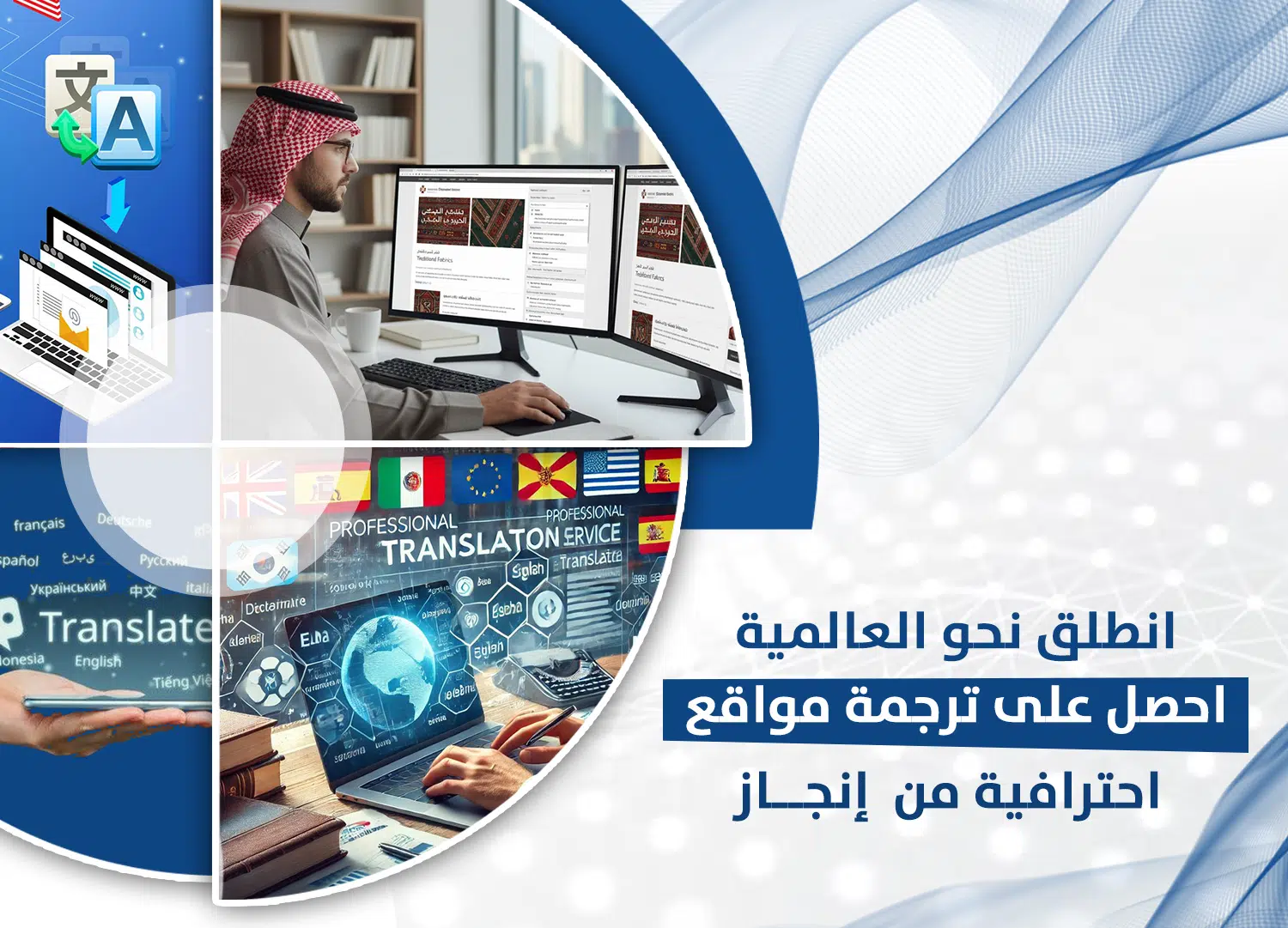Website translation is a fundamental component in enhancing a company’s global presence and expanding its reach to audiences of diverse cultures and languages. Thanks to rapid technological advancements, it is now possible to communicate with users in their native language and provide them with a personalized browsing experience. This contributes to building trust and boosting engagement.
Website translation plays a vital role in expanding business operations and accessing new global markets, making it an essential part of any company’s digital growth strategy. The importance of website translation goes beyond simply transferring content from one language to another; it requires a deep understanding of local cultures and customs to avoid mistakes that could negatively affect the brand’s overall image.
Furthermore, effective website translation helps improve a site’s visibility on search engines within targeted markets, increasing the chances of reaching new customer segments and driving business growth. In this article, we will explore the importance of website translation and the best practices to ensure accuracy and fluency in translated content.
With the rapid pace of digital transformation, reaching a global audience has become as easy as the click of a button. However, to make this reach effective, businesses must overcome the language barrier—something that specialized translation makes possible. Below are the key aspects that highlight the importance of website translation:
Reaching a Wider Audience
Translating your website into multiple languages allows businesses to engage with audiences from various cultures, offering content in their native language. This increases the likelihood of content being understood and appreciated, thereby enhancing user engagement.
Building Trust and Credibility
Visitors feel that a website is tailored to them when content is presented in their own language, which helps build trust. A shared language creates a sense of comfort and respect, positively impacting customer relationships and increasing loyalty.
Enhancing User Experience
Providing a smooth and seamless browsing experience is a core goal of any website. Accurate translation ensures that visitors can navigate and understand content easily, without confusion. A great user experience increases the chances of return visits and attracts new customers.
Increasing Sales and Revenue
When a website is accessible and easy to use in the customer’s language, they are more likely to engage with the products or services offered. This increases conversions and sales. Translation draws in potential customers and helps convert them into actual buyers, ultimately contributing to profitability.
Boosting Search Engine Performance (SEO)
Effective translation improves a website’s performance on local search engines. Search engines like Google rely on content to rank results. Having content in multiple languages increases visibility in global search results and improves the website’s ranking in target markets.
Gaining a Competitive Advantage
Companies that invest in translating their websites outperform competitors who haven’t embraced this approach. Customers can access their services and products more easily, giving the business a competitive edge and strengthening its global presence.
Enhancing Interaction and Communication
Translation opens up effective communication channels with customers—whether through contact forms, reviews, or customer service. This engagement helps build strong relationships and allows companies to better understand customer needs and expectations.
Best Practices for Accurate and Fluent Website Translation:
To ensure a high-quality user experience, it’s crucial to follow best practices when translating websites. Here are the most important ones:
Use Professional Translators with Industry Expertise
Hiring professional translators familiar with your industry—whether commercial, technical, or legal—ensures that the language and cultural nuances are captured accurately. This helps convey the right message and appeal to your audience effectively.
Embrace Cultural Localization
Successful translation is not just about converting words from one language to another; it also involves understanding the local culture of your target audience. Content must be adapted to local customs, beliefs, colors, designs, and visuals that resonate with the target market.
Use Computer-Assisted Translation (CAT) Tools
Tools like SDL Trados and MemoQ help ensure consistency in terminology and avoid repeated translations, resulting in higher quality and lower costs. These tools also make it easier to manage translation projects with multiple translators.
Proofread and Review by Language Specialists
Linguistic proofreading is essential to ensure translation accuracy and eliminate errors. Ideally, an independent language expert should review the content to check for quality and fluency, boosting the website’s credibility and creating a positive user impression.
Ensure SEO Compatibility
Incorporate the appropriate keywords for each language to optimize the website for search engines in all targeted regions. This helps users find your content easily and improves search engine rankings.
Test the User Experience Post-Translation
Once translation is complete, test the website in the target language to ensure that all text, images, and interactive elements are correctly placed and functioning. This helps identify and fix any issues that might affect the user experience.
Maintain Brand Tone and Voice
The translated content should reflect the brand’s tone and purpose—whether friendly and informal or professional and formal. Maintaining consistency in tone helps deliver the message effectively and preserves brand identity.
Use a Multilingual Content Management System (CMS)
Opt for a CMS that supports multilingual content, such as WordPress or Joomla. This facilitates ongoing content updates and ensures that all translated versions remain consistent and up to date.
Listen to Feedback from Local Users
Local users can provide valuable insights into how the translation can be improved to better meet their expectations. Listening to this feedback allows for continuous refinement and enhancement of the translated content.
In Conclusion:
Providing multilingual content on websites has become a must for companies aiming to expand and connect with a global audience. Injaz offers high-quality website translation solutions, with a team of professionals who combine linguistic expertise with cultural awareness to ensure messages are delivered clearly and fluently.
At Injaz, we are committed to offering users a fully localized browsing experience in their native language—enhancing trust and enabling effective communication. Don’t hesitate to choose Injaz as your partner in global success through our custom website translation services tailored to your needs and growth.


